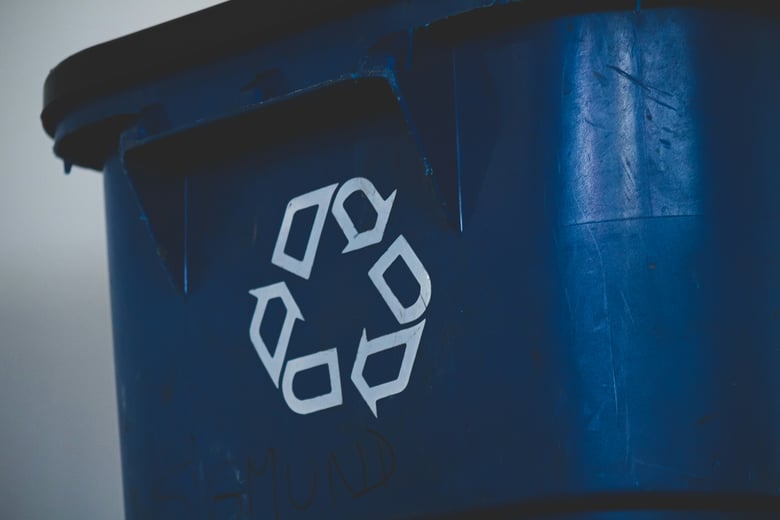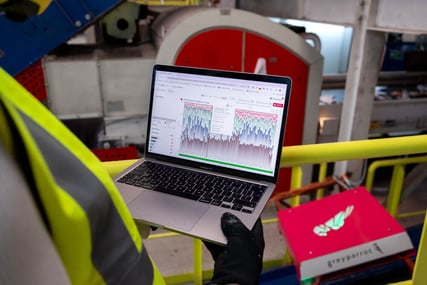In the lead up to Global Recycling Day, we invited James Piper, author of definitive recycling guide The Rubbish Book, to host a Q&A session with the Greyparrot team.
As a self-styled “recycling geek” and former CEO at compliance organisation Ecosurety, there was no better person to answer our questions about recycling and packaging than James.

Navigating the complexities of waste management
The opening sentences of The Rubbish Book summarise one of the key challenges of recycling today:
Everything can be recycled … In the world of waste, there is a big difference between whether something can physically be recycled, and whether it actually is.”
Our conversation began with a big question: do we know how much of our waste is actually being recycled? For James, who supports prevention, reuse and refill strategies as well as recycling, it’s a question of clarity.
Countries like the UK have healthy-looking recycling rates, but we often don’t know what happens to waste once it’s exported. Tonnes of material marked as ‘recycled’ at the export stage could end up polluting the natural environment alongside EU plastic exports in countries like Turkey.
The EU’s upcoming ban on plastic waste exports to non-OECD countries will increase the pressure to recycle waste domestically for countries across the region, and the UN’s upcoming Global Plastics Treaty will (hopefully) encourage circularity around the world.
Why circular packaging is so complex
One of the key takeaways from our conversation with James was that environmentally-friendly packaging decisions aren’t always as obvious as they first seem.
To design more recyclable packaging, each part of the value chain need to empower one another with more visibility into their processes.
A coffee pod conundrum – is "bean-to-cup" really better?

As a non-executive director at both Ecosurety and OPRL (the UK’s not-for-profit provider of recycling labels for packaging), James is an expert on recyclable packaging.
He’s dedicated a lot of thought to coffee, in particular — how we consume it, but also how we transport and package it. His research has led to some surprising insights that highlight the need to consider the full lifecycle of a product, rather than the packaging we first see in the supermarket.
After asking the team whether “bean-to-cup” coffee or coffee pods had a greater environmental impact, James revealed that because pods are more efficient, they use less actual coffee grounds than the packaging-free alternative.
Referring to research from Wired, James explained that the average pod uses 5.7g of coffee per capsule, whereas filter coffee is around 7g.
The difference in weight and volume at a global scale means that after collection, transport and packaging, the recyclable aluminium pods release far fewer emissions. To make the case for investment in processes like aluminium pod recycling, we need a fuller picture of production.
Changing perceptions of plastic

James’s coffee pod example led to discussions about recycling’s most-discussed material: plastic.
When asked about plastic recycling in light of recent reports on its ineffectiveness, James made the point that widely-accepted materials like glass and aluminium often take the familiar forms of bottles and cans in our waste streams.
Plastic’s versatility means that it can take shape in hard-to-recycle flexible films and single-use bags, but also widely-recycled products like PET bottles. James agreed that we need to move away from virgin plastic, but by “lumping all plastic together”, there’s a risk of embracing alternatives that make a net-negative impact.
A lack of visibility and communication between supermarkets and the waste sector led many businesses to adopt composite milk cartons over HDPE, in an effort to meet customers’ demands for more recyclable packaging.
In reality, it’s likely that HDPE was more practically recyclable (at least for now) than the cartons, which often require investment in specialised recovery infrastructure.
It’s one example of the need for waste managers to have more of a voice in the packaging value chain, and to provide the data stakeholders like supermarkets need to make environmentally-friendly supply chain decisions.
Why we need data to decide what “good packaging” looks like

Surprising answers like these highlight the challenge that regulators face when deciding what “good” and “bad” looks like for legislation like extended producer responsibility (EPR) or the EU’s Packaging and Packaging Waste Regulation (PPWR).
When asked about encouraging visibility and collaboration between links in the value chain, James noted that that regulation should provide long-overdue alignment.
Effective EPR and PPWR will make the sustainable choice far clearer (and more cost-effective) for supermarkets, brands and consumers. To ensure that alignment is in the right direction, it needs to be based on real-world data that accounts for the complex lifecycle of packaging – that's why we developed Deepnest, the world's first waste intelligence platform for brands and packaging producers.
Building a community of recycling heroes
 For James, it’s the responsibility of the value chain — from regulators through to packaging designers, brands, and recyclers — to deliver products that make it as easy as possible for consumers to be recycling heroes .
For James, it’s the responsibility of the value chain — from regulators through to packaging designers, brands, and recyclers — to deliver products that make it as easy as possible for consumers to be recycling heroes .
In part, that means responding to consumer confusion about recycling’s effectiveness with transparency about what happens to the products in their recycling bins.
It also means stronger, data-driven regulation that incentivises prevention, reuse and recyclable packaging design. By the time that packaging reaches supermarket shelves, it should be the most cost-effective, obvious choice for consumers, newly-empowered to get recycling right every time.
Want to learn more about what's getting recycled, and what isn't? Find out what else our data revealed about global waste in 2023 here.




.png?width=501&height=285&name=IMG_6004%20(1).png)